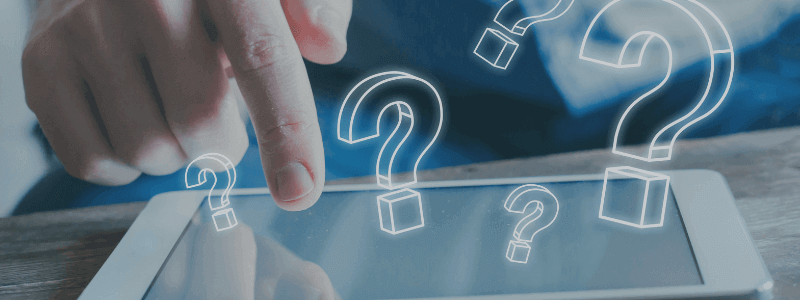
The pandemic brought about rapid changes in life and business for many. At MouthWatch we have seen the growth and rapid adoption of teledentistry being paralleled by positive changes in legislative and third-party payor support. Dental practices began adopting innovative practice models and patients finding virtual visits convenient and helpful. And during 2020 across our webinars, presentations, TeleDent demos and more, we fielded a lot of questions about teledentistry. Here’s what we’ve identified as the top 5 questions of 2020, and how we answer them.
1. “Dentistry is a hands-on profession. How can teledentistry be relevant?”
At its core, dental care is hands-on, with a patient in the chair. And that won’t be happening through a screen any ime soon. However, teledentistry offers enhancements to how dental providers practice and how those in-chair appointments happen. Once considered mostly as a public-health strategy, teledentistry has found a home in every day dental practices. From limited evaluations, post-operative care, referral processes, expanded practice models to in-office teledentistry exams, the opportunities are becoming clearer to practicing dentists.With most dental office at a lesser capacity of patients compared to a year ago, teledentistry also offers new revenue stream opportunities to engage the patients who are reluctant to return to in-person care.
2. “Can I get paid for teledentistry?”
Now embraced by many third-party payors, the synchronous (D9995) and asynchronous (D9996) teledentistry codes are a method that care is delivered, not a procedure itself. These codes must always be used in conjunction with the procedure code for the service. For example, utilizing TeleDent, the dentist can connect with the patient via secure live video calls to complete a limited oral evaluation. The dentist can then prescribe antibiotics if needed and determine need and urgency to see the patient in the clinic knowing the procedure needed. For example a fractured tooth needing a crown or a filling. The dental practice will then bill a Limited Oral Evaluation (D0140) AND Synchronous teledentistry (D9995) and, depending on the insurance carrier, be reimbursed for the teledentistry-delivered D0140. Check with your payors and get guidance if needed from your state board.And see the 2020 FAQ #4 below.
3. “What do patients think of teledentistry?”
Overwhelmingly positive reports! Some surveys and studies are reporting 94-97% satisfaction from patients rating convenience and needs being met by a teledentistry consultation. Many appreciate the ability to visit with their provider from the safety and comfort of home, or not needing to take off work to drive to the dental office for a very short dental visit. For patients, the teledentistry secret is out. Moving ahead, we believe it’s clear that patients will expect telehealth options for dental care, just as they are expecting them in other healthcare.
4. “Is teledentistry allowed in my state?”
Every state has its own Dental Practice Act, regulating dental care. Many of these also specifically regulate the definition and use of teledentistry. It is important to be clear on your state’s Act. You can contact your dental board for clarification. With a few exceptions, however, most states are considered “teledentistry friendly” these days. We have a quick reference guide to teledentistry regulation in each of the 50 states, and you can download the information as an ebook also.
5. “How hard it is to get started with teledentistry?”
First and foremost you must maintain HIPAA compliance and protect PHI. Using consumer video chat apps (FactTime, Skype, Zoom, etc.) will not protect you or provide a record of the teledentistry interaction. TeleDent has been designed from the ground-up as a HIPAA secure telehealth platform for dental care. That includes creating a record of an interaction for your practice should it be needed.
TeleDent was designed to be turnkey. You can be up and running on day 1. An intuitive interface, a complete library of on-demand video training, a friendly Customer Success team, and live training and webinars available for every user. When it comes to equipment needed, it’s simple: any device that can run a modern web browser. Intraoral cameras are optional (they add a lot of value when combined with TeleDent for some use cases). For remote patient encounters an intraoral camera isn’t needed. It’s impressive what a patient can capture with a smartphone to share with the dentist for evaluation. In addition, video or still images can be captured during the a live video consultation as the patient is displaying a concern. These images provide the dentist assets to create a treatment plan or to share withspecialists for referrals.
Get your questions answered
Schedule a solutions call to get questions answered about teledentistry for your setting and how TeleDent will deliver benefits to your patients, practice or program.
